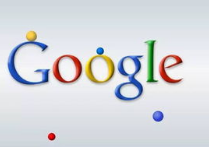- 阅读
- 阅读
- 技巧
- 百科
- 试题
- 文化
- 技能
In search of a problem
寻找问题
The current era of trustbuster activism is based on a misapprehension.
当今时代的反垄断激进主义是基于一种误解。

The locus of monopoly, in the DOJ’s telling, seems to shift.
根据美国司法部的说法,垄断的核心内容似乎正在发生变化。
First it lies with Google’s power on the demand side of digital advertising, through its adjacent strength in search ads.
最开始,垄断在于谷歌在数字广告需求侧的实力,因为它在搜索广告方面拥有邻近优势。
At other times, it is the company’s hold on the supply side, bolstered when it bought DoubleClick.
在其他时候,垄断关乎谷歌在供应侧的控制,这种控制在收购DoubleClick时得到了加强。
At still other times, the locus of market power is the exchange.
而在另一些时候,市场力量的中心又变成了交易平台。
This shape-shifting may simply be how foreclosure works in digital markets.
这种形态转变可能就是阻止数字市场竞争的运作方式。
The DOJ’s trustbusters are certainly eager to present Google’s end-to-end presence in the ad-tech stack as inherently sinister.
美国司法部的反托拉斯者当然急于将谷歌的这种供求两头抓的广告技术堆栈描述为本质上就是邪恶的。
But is it?
但事情果真如此吗?
The profitability of the ad-tech stack might reflect the fact it is more efficient under a single roof.
广告技术堆栈的盈利能力可能反映了这样一个事实,即在一个屋檐下效率更高。
The integration of publisher ad server, exchange and demand-side platforms is likely to make for a smoother flow of data, better matches between buyers and sellers and a more streamlined experience.
出版商广告服务器、交易和需求端平台的整合可能会使数据流动更顺畅,买家和卖家之间更好地匹配,体验更流畅高效。
And there are “network externalities” to consider.
此外,还有“网络外部性”需要考虑。
Ad tech brings together distinct groups (advertisers, publishers and consumers).
广告技术将不同的群体(广告商、出版商和消费者)聚集在一起。
Each sort of customer benefits the more custom there is from the other sorts: advertisers want access to a broad range of inventory; publishers want lots of bidders for their display space; and so on.
其他类型的群体来得越多,每种群体的受益就越大:广告商希望获得各种各样的库存,出版商希望有很多竞标者为他们的展示位出价,等等。
In similar kinds of networks, it is common for one enterprise to cater to all sides of the exchange.
在类似的网络中,一家企业迎合交易各方的需求是很常见的。
Think of payment systems, which have a business relationship with credit-card users as well as merchants.
想想支付系统,它与信用卡用户和商家都有业务关系。
Implicit in the DOJ case is the idea that the only route to a large part of the consumer market goes through Google.
美国司法部的谷歌案中隐含着这样一种想法,即进入很大一部分消费者市场的唯一途径是通过谷歌。
Trustbusters like to define markets narrowly.
反托拉斯者喜欢狭义地定义市场。
The smaller the market, the larger the leading firms loom in it.
市场越小,领军企业的规模就越大。
For their part, businesses like to claim that good substitutes for their products are everywhere: Netflix’s boss once claimed the firm’s main competitor was “sleep”.
对于企业来说,他们喜欢声称,他们产品的优秀替代品无处不在:网飞的老板曾声称该公司的主要竞争对手是“睡眠”。
It seems fair to say that “open-web display advertising sold via exchanges” is a distinct industry, because it has its own unique production technology.
公平地说,“通过交易平台销售的开放网络展示广告”是一个独特的行业,因为它有自己独特的生产技术。
It is less obvious that it is a market which is truly separate from digital advertising or plain old advertising.
不那么明显的是,这是一个与数字广告或传统广告真正分开的市场。
Nor is it obvious the FTC was lax in permitting the DoubleClick purchase.
联邦贸易委员会允许收购DoubleClick,这也并非显然就是一种松懈。
After all, the European Commission—no friend to American tech—allowed it after an in-depth investigation.
毕竟,欧盟委员会——这可绝非是美国科技公司的朋友——在经过深入调查后也允许了这种做法。
Perhaps, however, there was a better option available, says William Kovacic, an FTC commissioner at the time of the merger and now a law professor at George Washington University.
然而,威廉·科瓦奇表示,或许还有更好的选择。在进行合并时科瓦奇担任联邦贸易委员会委员,现为乔治华盛顿大学的法学教授。
Instead of suing in court to block the merger and (probably) losing, the agency could have pursued an internal-administrative trial.
与其通过在法庭上起诉来阻止合并,而且(可能)败诉,该机构本可以进行内部行政审判。
This would have afforded officials an opportunity to learn about tech and update their practices, says Mr Kovacic.
科瓦奇表示,这本可以让官员们有机会了解技术并更新他们的做法。
It might have allowed for remedies, short of unwinding the merger, to put Google on watch.
如果对谷歌进行观察,而不是取消合并,联邦贸易委员会可能会考虑到补救措施的。
The charge of “antitrust under-enforcement”, which has fuelled today’s over-active merger control, might not have taken hold.
“反垄断执法不力”的指控可能也就不会占上风,正是这种指控助长了如今过于激进的并购控制。
This is hardly water under the bridge.
很难说这些都是往事了。
An epic court battle is now in prospect.
现在,一场史诗般的法庭之战即将到来。
It may seem strange that this corner of the advertising business—almost a side-hustle for Google—will be the locus for it.
广告业务的这个角落——几乎是谷歌的一个副业——将成为战场,这可能看起来有些奇怪。
But antitrust cases often hinge on obscure details or arguments.
但反垄断案件往往取决于晦涩不清的细节或论据。
It is no stranger, after all, than a Supreme Court ruling that turned on the use of a railway terminal in St Louis.
毕竟,这比最高法院对圣路易斯铁路终点站做出的裁决也奇怪不到哪里去。
来源:经济学人
参与评论